New independent research by Select Car Leasing using data produced by road safety charity THINK! highlights the perils of 'rubbernecking' whilst driving.
Referring to the physical act of craning your neck to look at something of interest, the UK's motorists are slowing down in droves to look at accidents, animals in passing fields or even just to wave to their friends on the street. The sheer scale of the problem was highlighted by a case in 2015 where police prosecuted more than 40 motorists in a single hour who were slowing down to film a lorry crash.
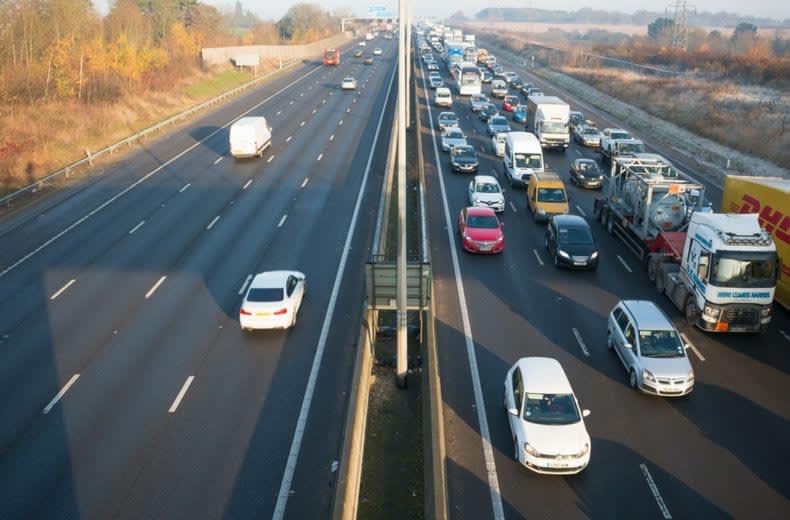
Rubbernecking' has developed from spying an accident on the motorway, to drivers actively slowing down on the many roads straddling famous landmarks to get a peek. The problem has become so severe in recent years, that authorities have put forward plans to build a tunnel next to Stonehenge, to put a lid on the issue.
With this in mind, Select Car Leasing analysed 50 of the UKs most iconic landmarks to find out the top 10 most dangerous landmarks to drive past in the UK today. To do this Select used the THINK! crash map* to count the number of accidents in the immediate surrounding area between 2013 and 2018.
These locations bring a whole new meaning to the term 'Tourist Trap'. Scroll down to see the top ten most dangerous landmarks to drive past in the UK in 2020.
Revealed: The UKs 10 Most Dangerous Landmarks to Drive Past
10) Windsor Castle
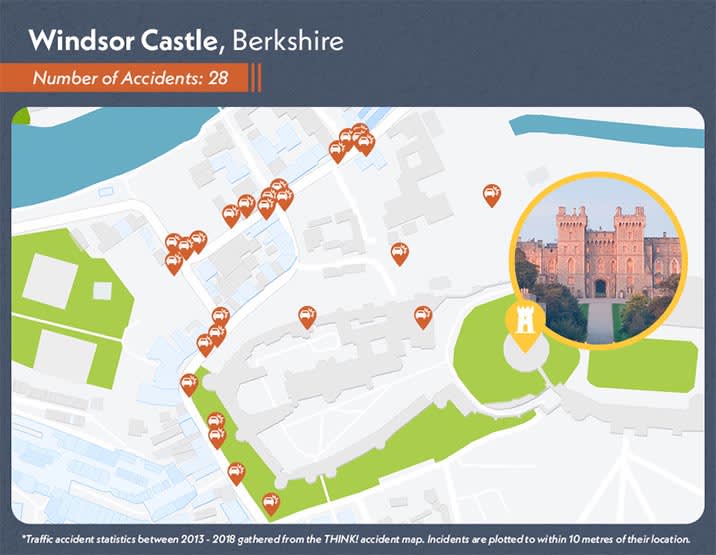
9) Blackpool Tower
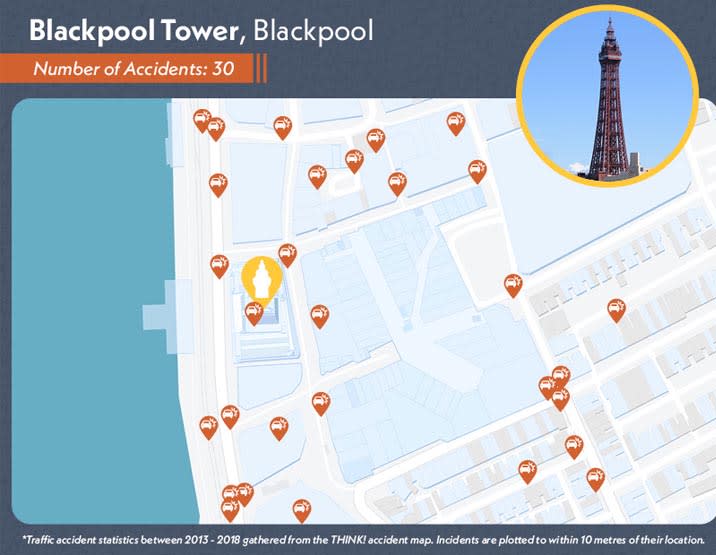
8) St. Paul's Cathedral
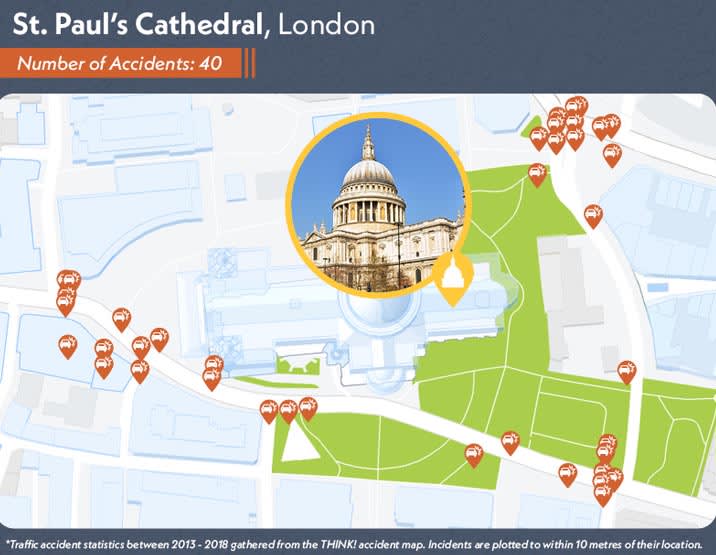
7) Humber Bridge
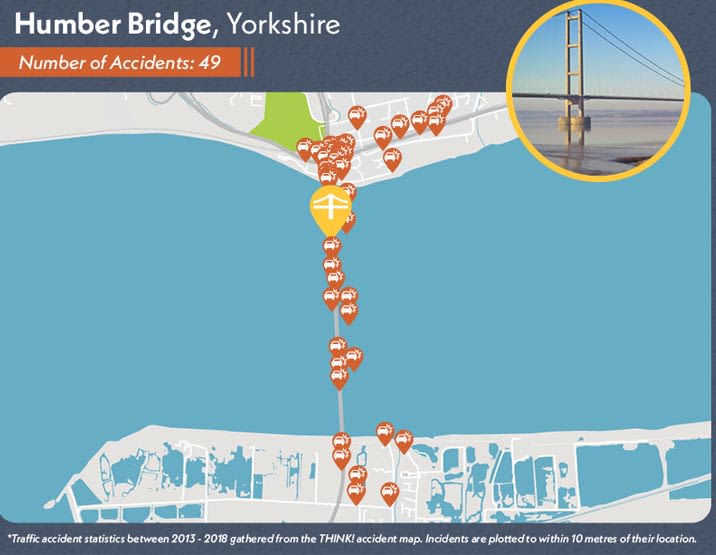
6) Angel of the North
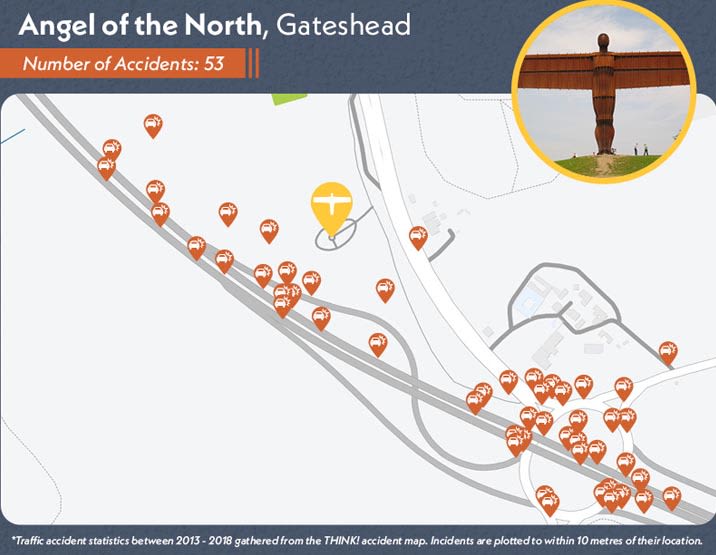
5) Stonehenge
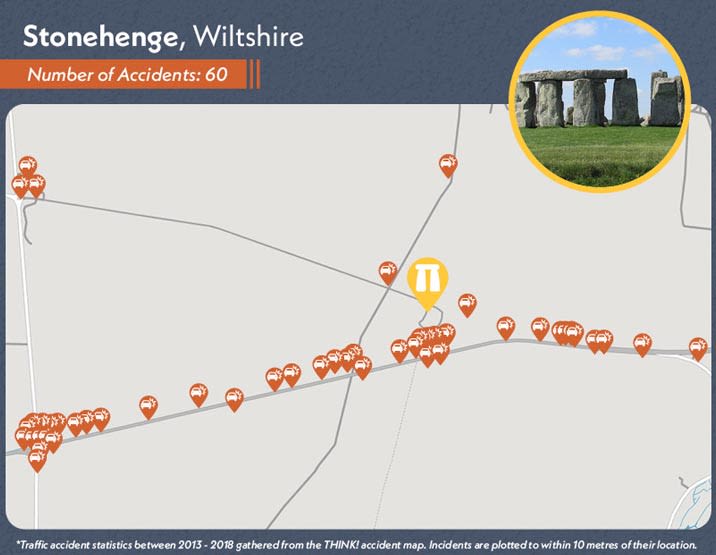
4) Houses of Parliament
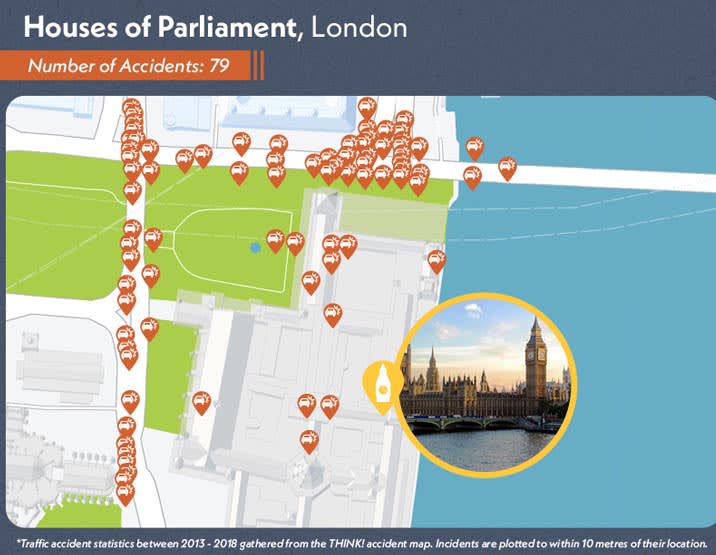
3) The Scott Monument
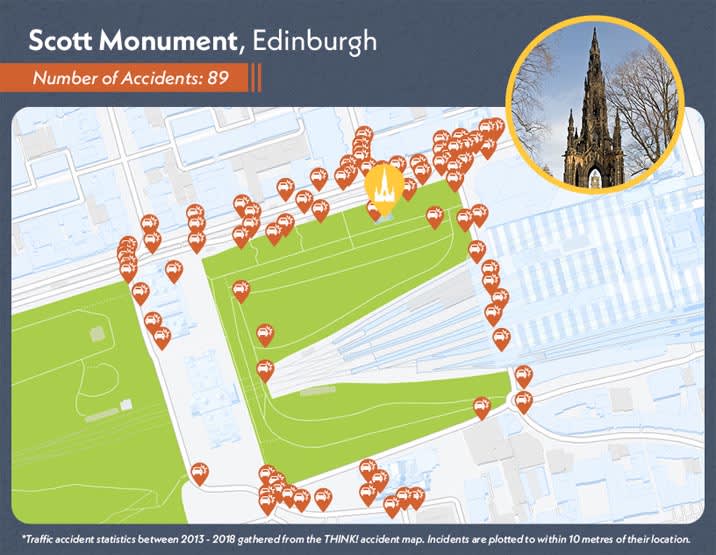
2) Brighton Pier
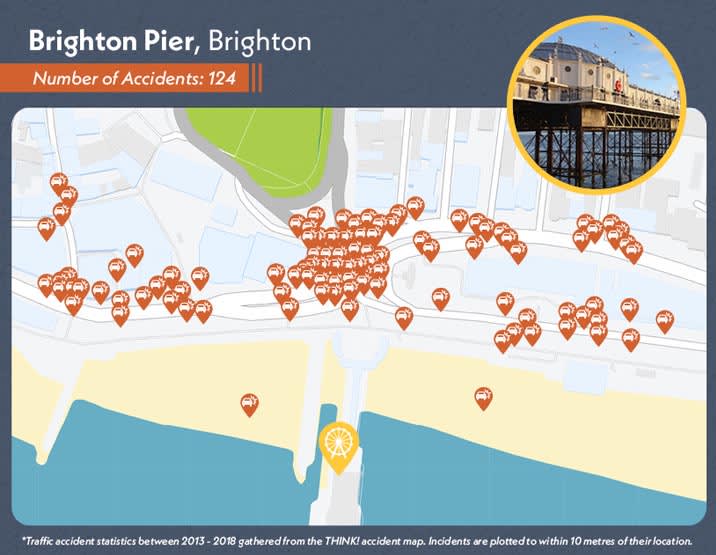
1) Buckingham Palace
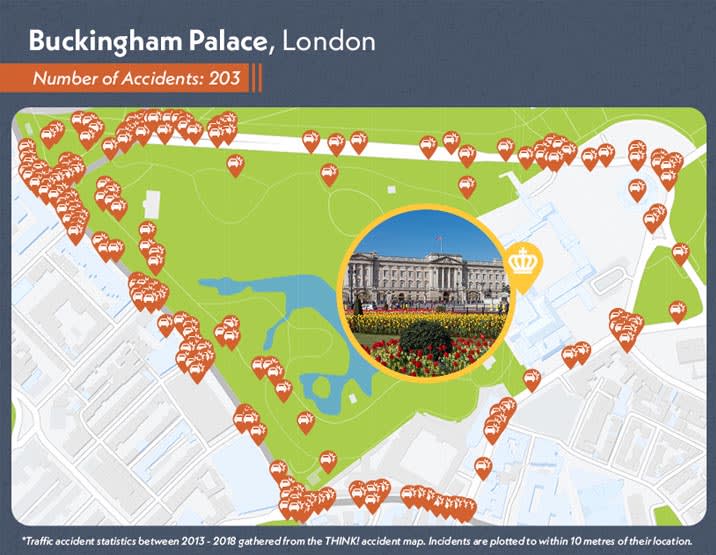
Buckingham Palace Proves To Be A Royal Pain For Motorists
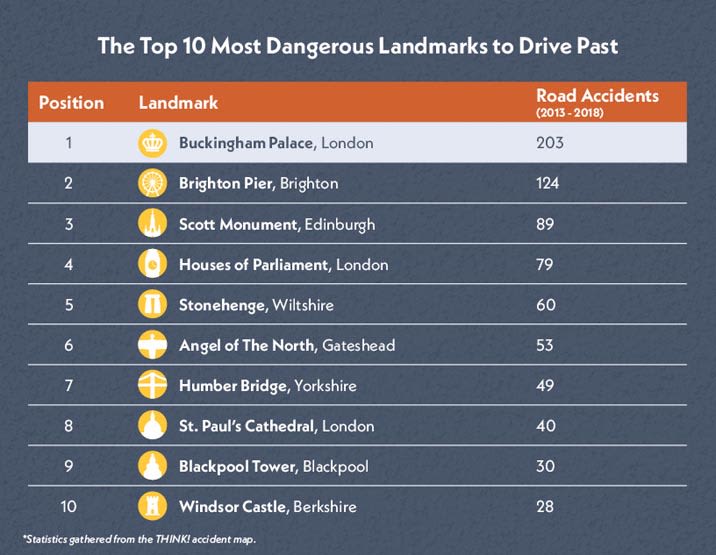
With the clamour to see a royal residence by tourists every year and the general hustle and bustle atmosphere in London, Buckingham Palace eclipsed the competition as the most dangerous landmark to drive past in the UK. In the 6 years between 2013 and 2018 there were 203 accidents in the surrounding roads of the palace thats 34 per year. A glut of tourists, cabbies, private vehicles, and cyclists mean the highways that hug one of the capital's most popular destinations are fast-becoming a hotbed of road accidents.
London appeared 3 times on the list, with the capital city's attractions bringing more collisions than any other location. The standout landmark featured on the list is Brighton Pier which came in second place, with 124 crashes in the past 6 years on the surrounding road and junctions. The appearance of the Angel of the North and Stonehenge make for concerning reading, considering the high-speed roads that run parallel to these attractions.
Landmark problem: construction of Spurs Stadium saw 39% increase in accidents
The home of Premier League team Tottenham Hotspur, the Tottenham Hotspur Stadium, has recently opened with construction beginning back in 2015.
To analyse the impact of the construction, we counted the number of accidents on the three roads surrounding the stadium before and after building began including High Road, Northumberland Park and Worchester Avenue.
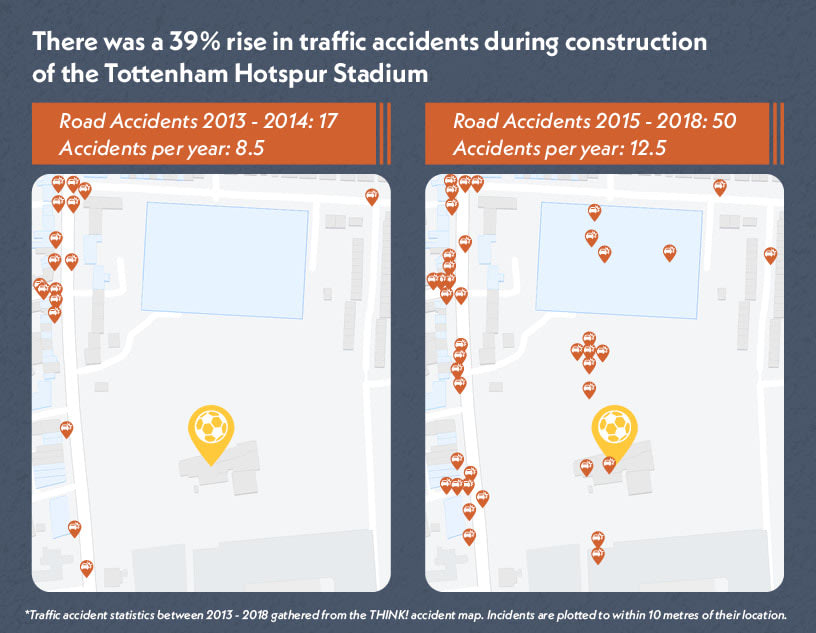
Before construction in the years 2013 and 2014, the was a total of 17 accidents with an average of 8.5 per year. However, between 2015 and 2018 once construction began, there was 47 accidents in the same area, averaging 11.8 per year.
Thats a considerable 39% rise in traffic accidents after they broke ground on the Tottenham Hotspur stadium.
*Note: Incidents are plotted to within 10 metres of their location and as such, can sometimes appear to be off the road or carriageway.
Raucous Rubberneckers creating global crises
The Accident Advice Helpline takes a firm line on the dangers of rubbernecking: "Rubbernecking and failing to pay attention to other road users around you could lead to a shunt or sideswiping, both of which could cause serious, life-changing injuries".
The problem has reached fever-pitch across Europe and further afield. In Germany, higher fines are set to be introduced to discourage a 'growing obsession' with rubbernecking and in California, 'Rubbernecking' was highlighted as a major factor in several vehicles being run off the road.
As each car slows to take a look, the motorist behind the rubbernecker will not be expecting the car in front to reduce its speed, creating significant potential for a nasty landmark-induced accident.
Add to the mix many roads surrounding some of the UK's most prominent landmarks operate at high speeds, there's the risk of a serious or fatal collision. In a recent report published in the Accident Advice Helpline, Rubbernecking was highlighted as the third most common cause for an accident.
The advice is clear on passing landmarks - when youre driving, keep your focus and watch the car in front. They may be tempted to slow down to view the passing monument or attractions. Its also important that your own eyes arent drawn from the road towards the landmarks, or it might be you who causes the accident. Drive safe!
*THINK Crash Map is an interactive map which documents all recorded road accidents and uses "official data from incidents reported to the police, so the results are the most reliable available."















